How to Make Macarons: the Meringue Stage (video tutorial)
Hello macaron baker friends! Today let’s talk about the Meringue Stage of making macarons! How to know when to stop whipping the meringue, what is the best speed to use in the mixer, and the science behind the meringue.
What is the science behind the Meringue?
When you start whipping egg whites, the whipping process unravels the proteins in the whites, which are formed of basically two types of amino acids: hydrophobic amino acids (repel water), and hydrophilic amino acids (bond well with water).
In the picture below you can see a representation of an egg white protein before the eggs being whipped. The amino acids with the + are the hydrophilic ones, and the amino acids with the – sign are the hydrophobic ones.
This post may contain affiliate links. I earn a commission from qualified purchases. Please read our Privacy policy here.
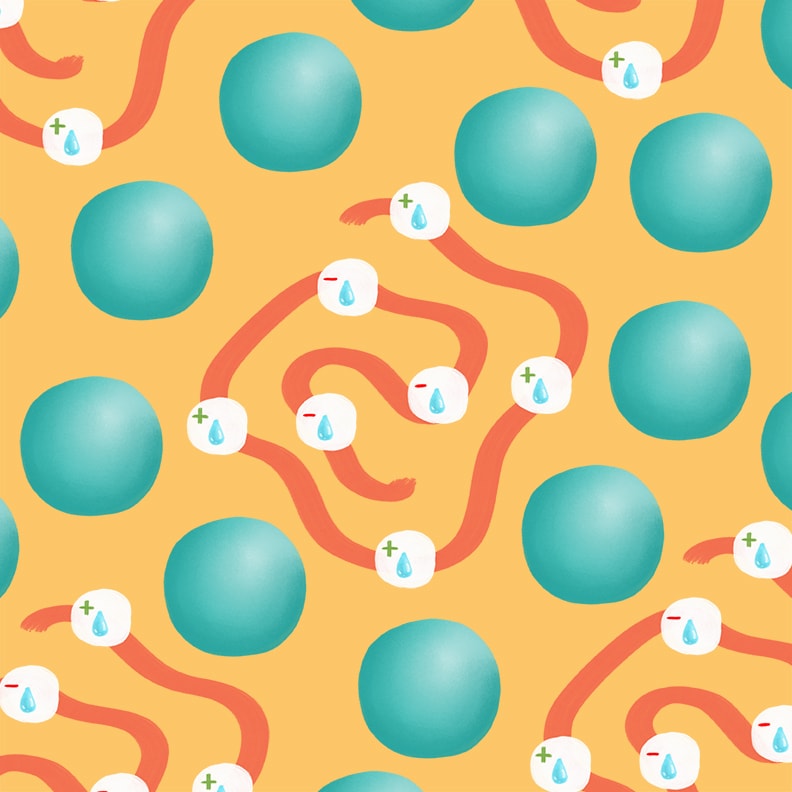
As you whip the whites, you add air to the mixture and also unravel the proteins in the whites. Whites are made of mostly water (90%) and proteins (10%), so the way you make liquidy whites into foamy meringue, is by whipping air into it quickly. The act of whipping will cause the amino acids that like water to be attracted to it, and the amino acids that don’t to form a structure protecting the air bubbles that have been added to the whole mixture.
This process is called denaturation and you can see it below.

A properly whipped meringue will guarantee that the protein bonds are forming a stable structure holding the water content of the meringue in place. The right amount of time whipping the meringue will form new chemical bonds that coat the air bubbles protecting them from those water particles.
Below is the structure of the meringue after whipped. The air bubbles added to the meringue during whipping are protected by the organized amino acids that are attracted to either water or air, keeping this strong structure in place.
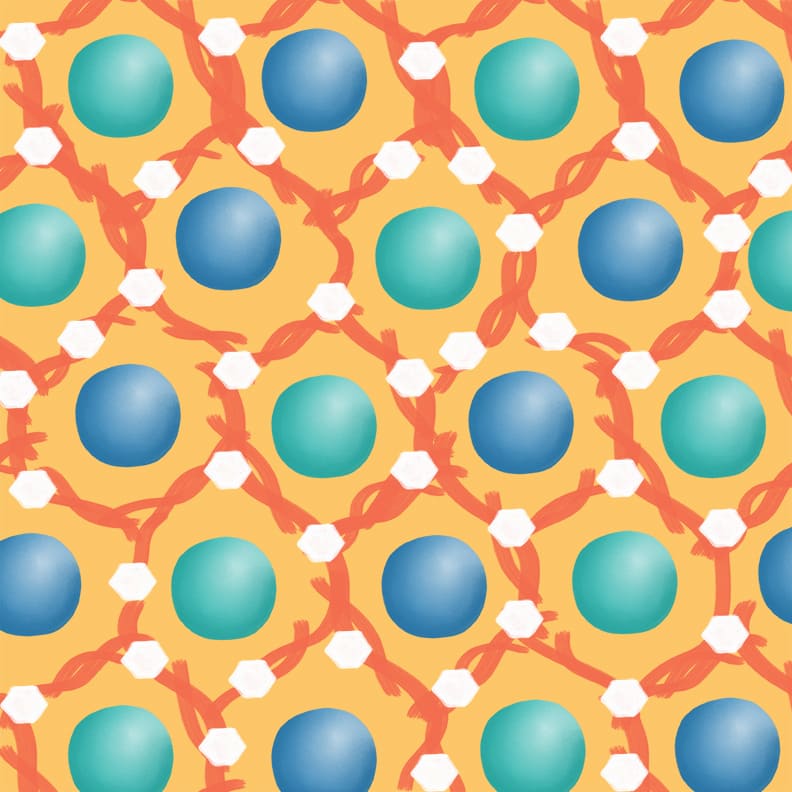
A soft meringue won’t have a strong enough protein structure to contain the water particles, and won’t have enough air and chemical bonds between the hydrophobic amino acids that will protect the air that it does have.
And an over whipped meringue will form such a tight protein structure that it will cause it to collapse, releasing the captured water, and the formed air, which will cause the whole structure to break down.
All of this to say that a stable meringue structure is extremely important for making perfect macarons!
The Swiss Meringue
Using the Swiss method, we start by making a syrup of sugar and egg whites, by whisking them together over a double boiler until the sugar melts.
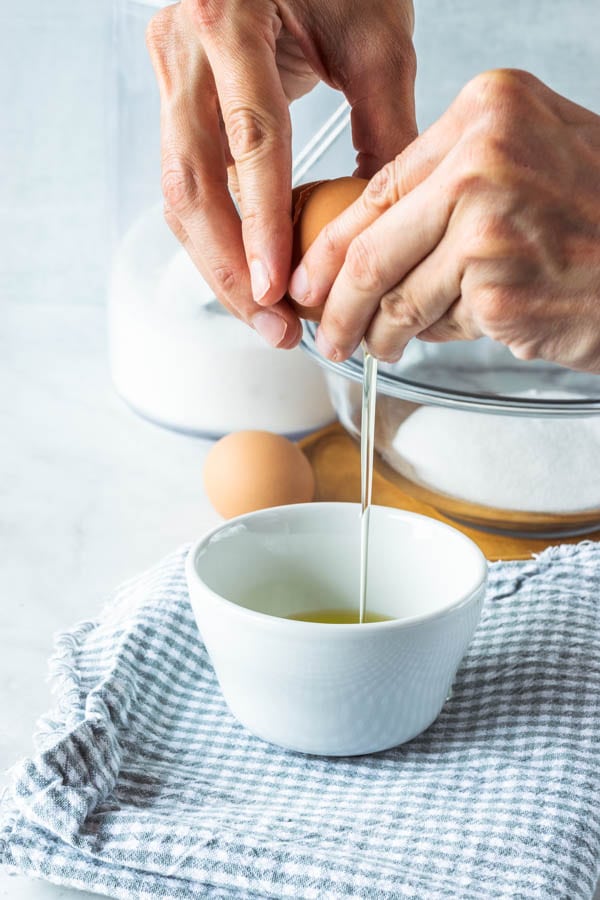
Once the sugar has melted, the syrup is then poured in the bowl of an electric mixer and it gets whipped until the meringue achieves stiff peaks.
Introducing heat to the egg whites and sugar will help with the denaturation process (the proteins unravelling as described above in pictures), as the heat helps the egg proteins to unfold more effortlessly.
And by melting the sugar, this will increase the viscosity of the syrup that coats the air bubbles, making for an even stronger structure.
How to whip meringue when making macarons? How to know when the meringue is whipped? How to recognize the stiff peaks in the meringue when making macarons? These are frequently asked questions, and things you should be observing, because if you are having issues making macarons, the meringue might just be where you are making the mistake.
Whipping the perfect meringue for macarons
After you’ve transferred the meringue to the bowl of the mixer, turn the mixer on LOW (speed 2 on the KitchenAid) and whisk for 30 seconds or so, until mixture becomes foamy and frothy.

Start raising speed to medium (speed 4 on the KitchenAid), where you will whip for 1-2 minutes until you start to see streaks of the whisk being formed on the meringue. In the picture below I couldn’t capture the streaks from the whisk because the mixer moves way too fast for me to capture, however, this is what the meringue is supposed to look like, very white, thick, but still soupy.
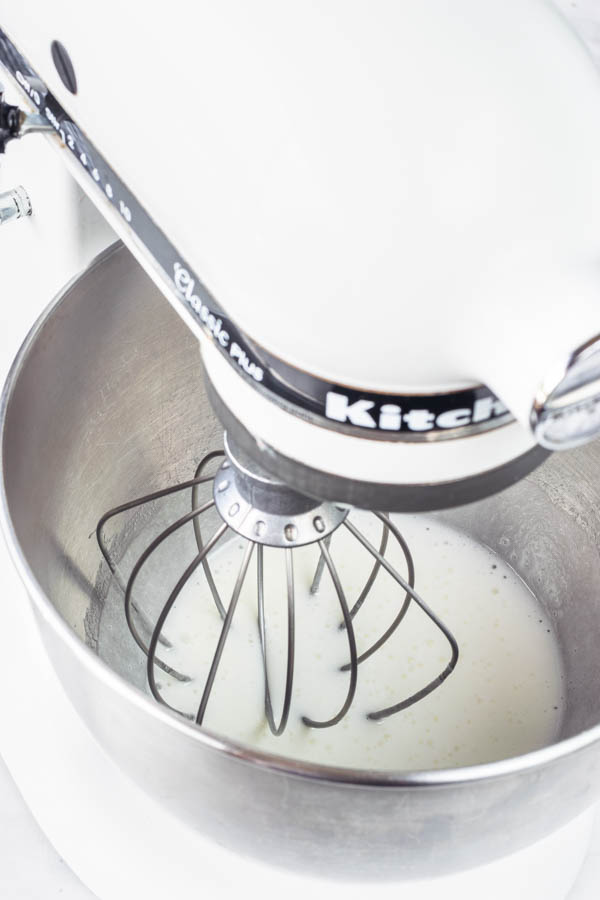
Once you identify this stage, you can start raising speed to medium-high which would be a speed 6 or 8 on the KitchenAid.
Then whip the meringue until stiff peaks are formed. This can take anywhere from 5 to 7 minutes. Usually my whipping time takes about 10 minutes on speed 6.
This will vary greatly depending on your mixer and on the speed you are using. And even between KitchenAids, the speed and potency of the mixer may vary, it depends on the model, on how long you’ve had it, etc.
Now, I get people asking all the time: how long should I whip the meringue and what speed?
And honestly, that will vary, and my mixer might be different than yours and have less or more powder, so you shouldn’t base yourself on the time and speed recommendation from someone else, but rather find out what time and speed work best for yourself.
The point is that you need a stiff meringue. With peaks shooting up!
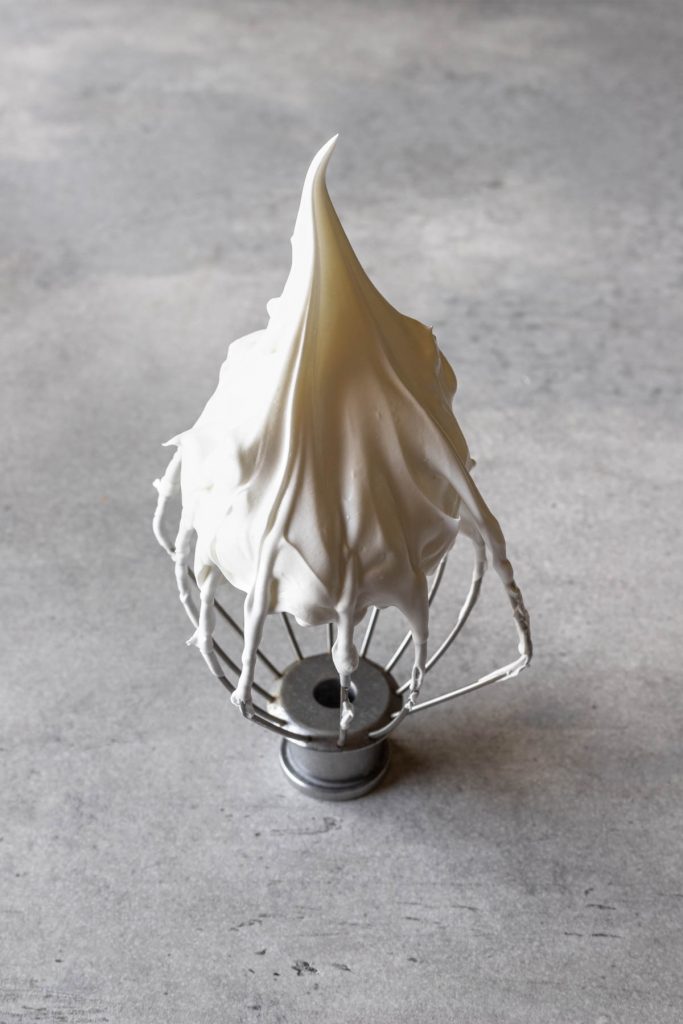
So if that’s the shape of your meringue, you’re right on!
How to know if the meringue is not whipped enough? The peak will be too long and bending down to the side, and in that case, the meringue isn’t ready yet.
How to know if you whipped the meringue too much? The peaks will be too stiff, short, and sticking up. The meringue will be separating into chunks, instead of having an elastic consistency. That’s when you know your meringue is over whipped.
What happens if I don’t whip the meringue properly when making macarons?
Several things might result from not whipping the meringue properly. So let’s talk macaron troubleshooting!
Here is a quick chart that might help you.

If you are kind of new to macaron baking, it might be harder to identify what your mistake is when making macarons. However, the more you practice, the better you will become at identifying what could have went wrong, and knowing more about troubleshooting can help you adjust for next time.
So basically, if you UNDER-whip the meringue, these are likely things to happen:
- Shells with no feet (which can also be caused by other things such as not enough resting time, and low oven temperatures)
- Hollow shells (also can be caused by overwhipping the meringue, underfolding the batter, not tapping the macaron tray before resting, etc)
- Cracked shells (which can also be caused by hot oven temperature, or not tapping the macaron trays)
- Wet batter (which may cause macarons to stick to the baking pan, not form a bottom skin, become mishapen)
If you OVER-whip the meringue, here are some possible results:
- Tall feet (which can also be caused by high oven temperature)
- Bumpy shells (when you overwhip the meringue, the macaronage might become a hard process, since the meringue will be too stiff to incorporate fully with the dry ingredients, causing your shells to have bumps and points on top when you pipe the macarons)
- Hollow shells (look above to see other things that could cause hollow shells)
Anyway, you want to aim for getting this stage of making the meringue JUST right, and this way, your chances of nailing the results will increase. And, of course, you will have to pay attention to the other aspects of making macarons such as the macaronage, the oven temperature, etc. We will cover those some other time!
I hope you enjoyed today’s post and found it useful in your macaron journey! Don’t forget to also check out the video where I show you how I make this stage work!
Here is the video tutorial on Youtube.
Visit Macaron School to see more informative posts about macarons.
Here are some posts that might interest you:
- How to make perfect macarons
- The most important stages when making macarons
- Frequently asked questions
- Understanding your oven
- Macarons for beginners
- Macaron Troubleshooting Guide
- Tools I use to make macarons
- Vegan Macaron Troubleshooting
- Hollow macarons



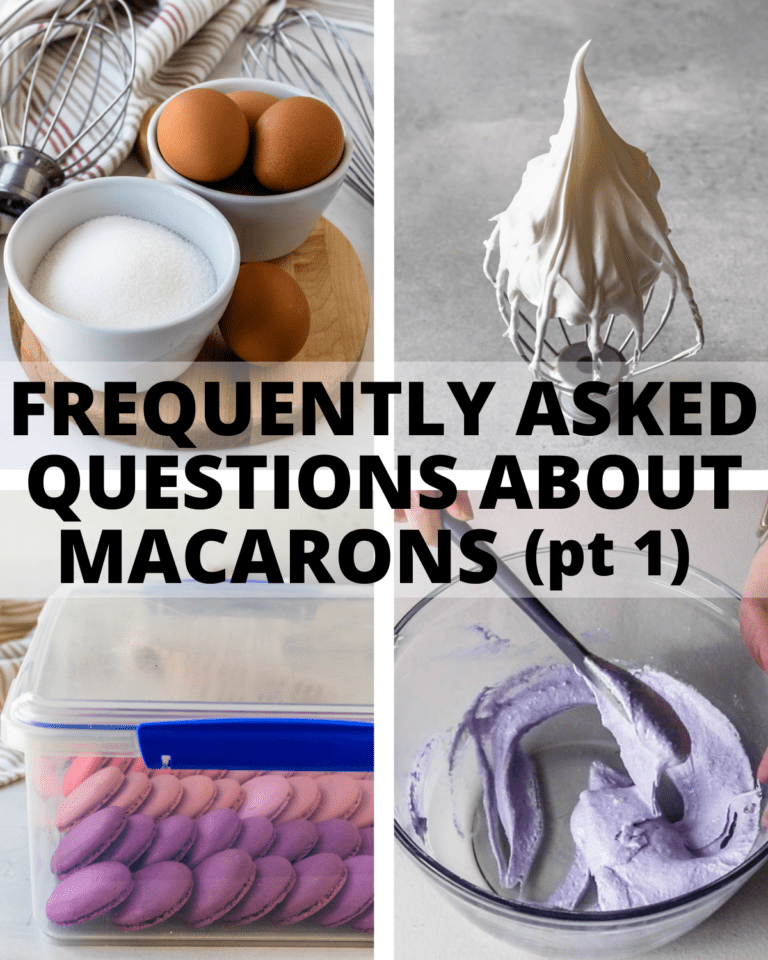
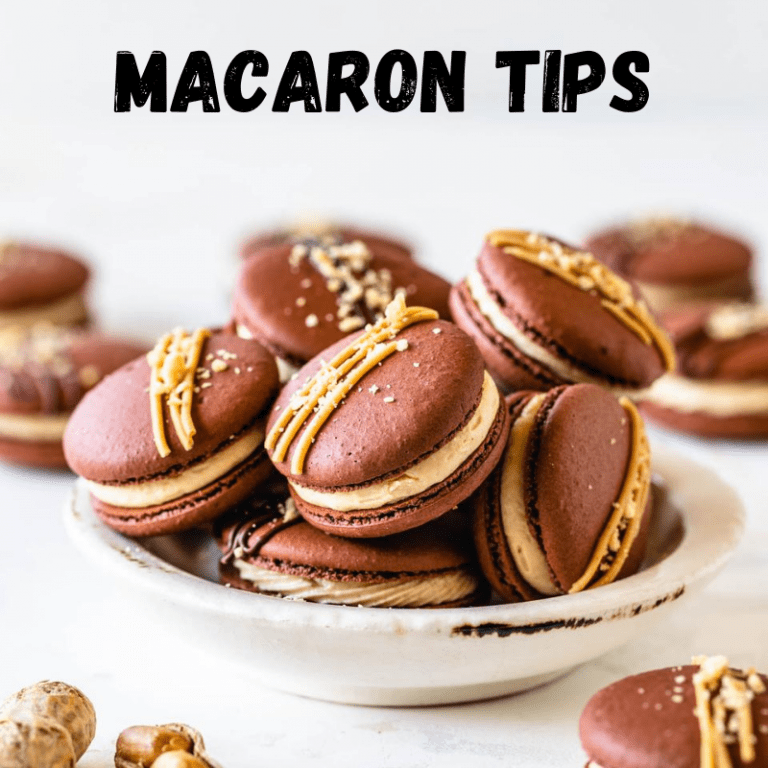
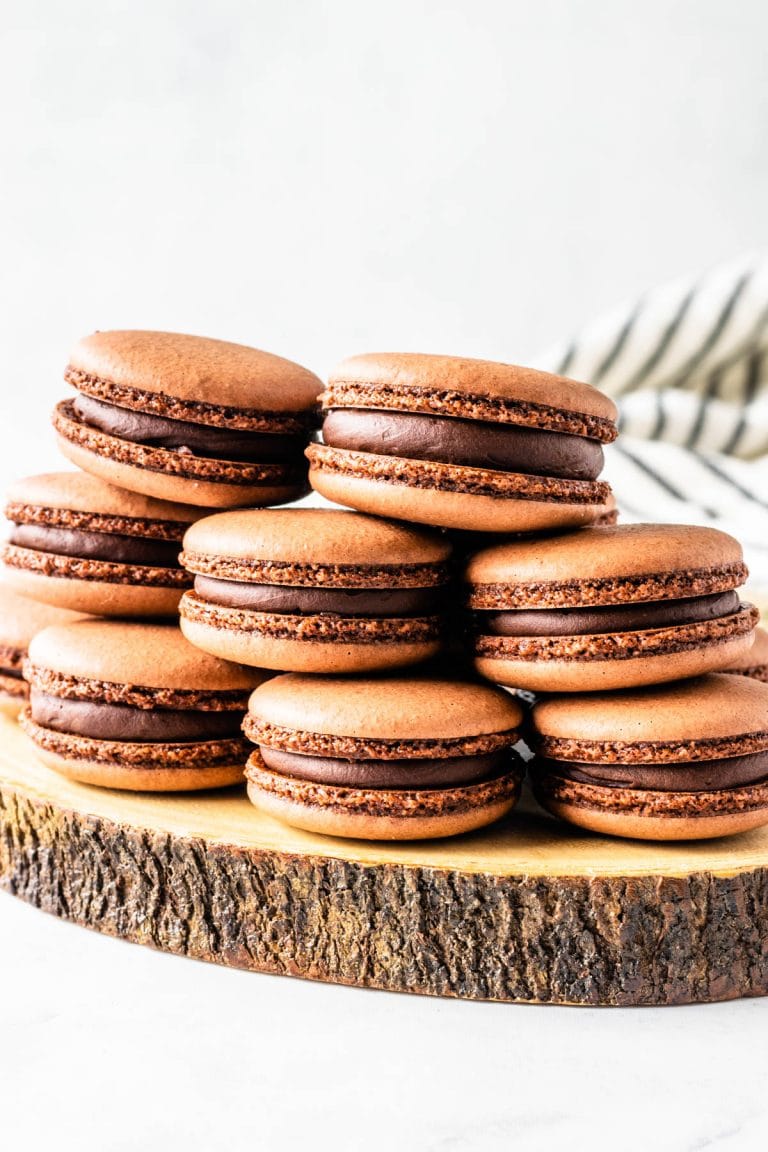
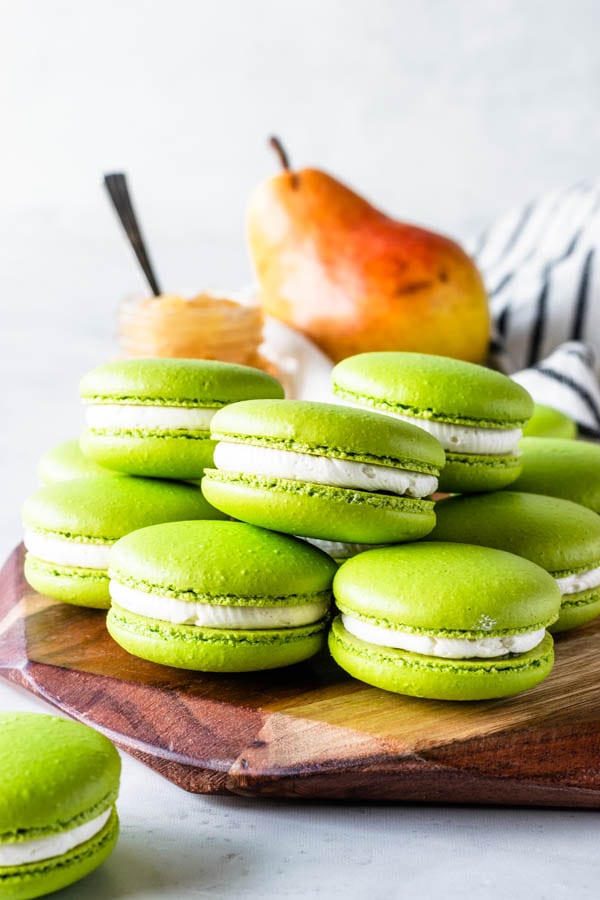

Achei muito legal esse tutorial!!!!!!
What do you recommend with the eggs? Use then straight from the fridge or let them at room temperature for a while before starting?
So probably better to have the eggs at room temperature. However, since you are going to heat them up with the sugar over a double boiler before whipping the meringue, it’s fine to have them from the fridge. If they are at room temperature they will incorporate with the sugar better and the sugar will melt faster. So it wouldn’t be the end of the world if the eggs were cold from the fridge. 🙂
Hello Camila,
Can you pl. send the recipe for macaroons. Your recipe and method is different. Pl send me the recipe where you melt sugar and egg-whites in a double boiler. Thanks so much. – Amitha
Hello, my macaron recipes can be found here. I have like 57 different flavors and recipes on the blog. Thank you!
Hi Camila! Can I add the color before the dry ingredients? Because I feel like I over mix when I add it after.
Eloisa
Yes you can, but don’t add it before the meringue comes to stiff peaks 🙂
Hello , what do you think its the best : eggs white from
Fresh seperate eggs or eggs white already seperate bought in bottle ? Thanks for your answer
I use egg whites from fresh eggs. Some bakers I know do use the bottle egg whites, but they say it takes a long time to whip to stiff peaks, and some brands won’t whip well.
Thanks for your answer !
Hi, what kind of Wilton tip do you use to pipe the meringue?
I use a large round 0.5″ tip
Hello,
I have never seen anyone do a double boiler method that way with sugar and egg whites! I am curious as to why use this method vs just whipping egg whites and unmelted sugar together. I thought the sandy texture of the sugar was supposed to help agitate the egg whites and form the meringue better? How does melting the sugar and egg whites together affect the texture of the macarons overall in the end? Is there a significant difference?
The swiss method (heating the sugar and whites over the double boiler) is actually way more stable than adding the sugar as the whites whip, first of all because it dissolves the sugar with the whites. French meringue is fragile, way easier to over beat and quick to collapse. Italian and swiss meringue, which require for the sugar to be dissolved before whipping is going to create a much more stable foundation.
It’s not the sandy texture of sugar that helps with the meringue, at least I’ve never heard of that. When you whip the egg whites, a protein called conalbumin starts to coagulate, which makes it form a network of air bubbles. and it’s also why people usually add cream of tartar or vinegar to french meringue, because those agents help stabilize the meringue and encourage the amino acids to bond together. And in the swiss and italian meringue you dont need any stabilizers like that. and the sugar itself does help with tightening the protein bonds and keeping the water away from the protein bonds formed by the whipped egg whites. And for that to happen the sugar needs to dissolve with the whites. That’s why the sugar should be added slowly when making french meringue, and that’s also why the methods that require the sugar to already be dissolved when the whipping starts are way more stable.
Hi Camila, if I want to use italian meringue, how much water should I add to the sugar?
I recommend you find a recipe that’s already using the Italian method, all ratios will be different, as well as the instructions, consistency of the meringue etc…